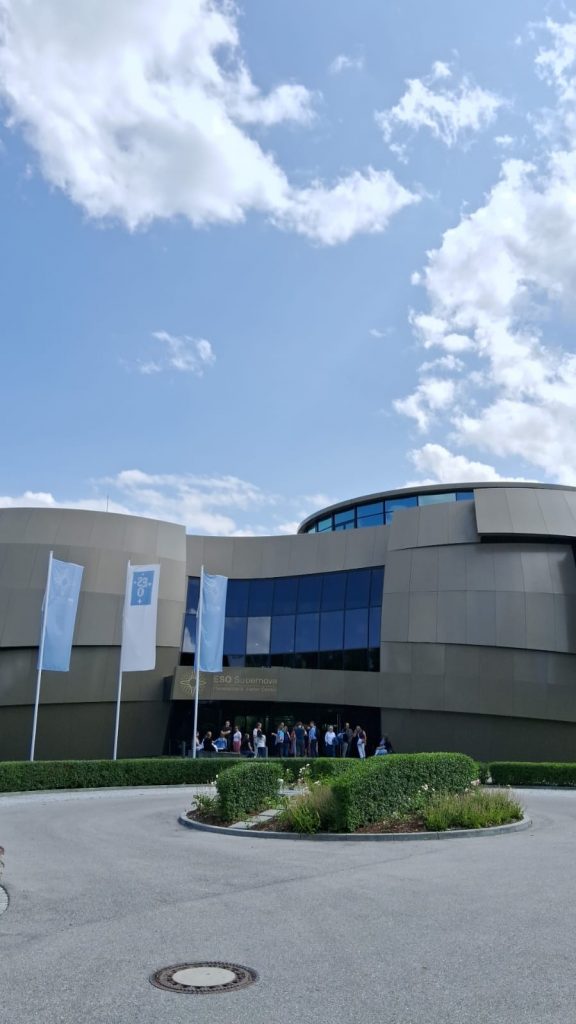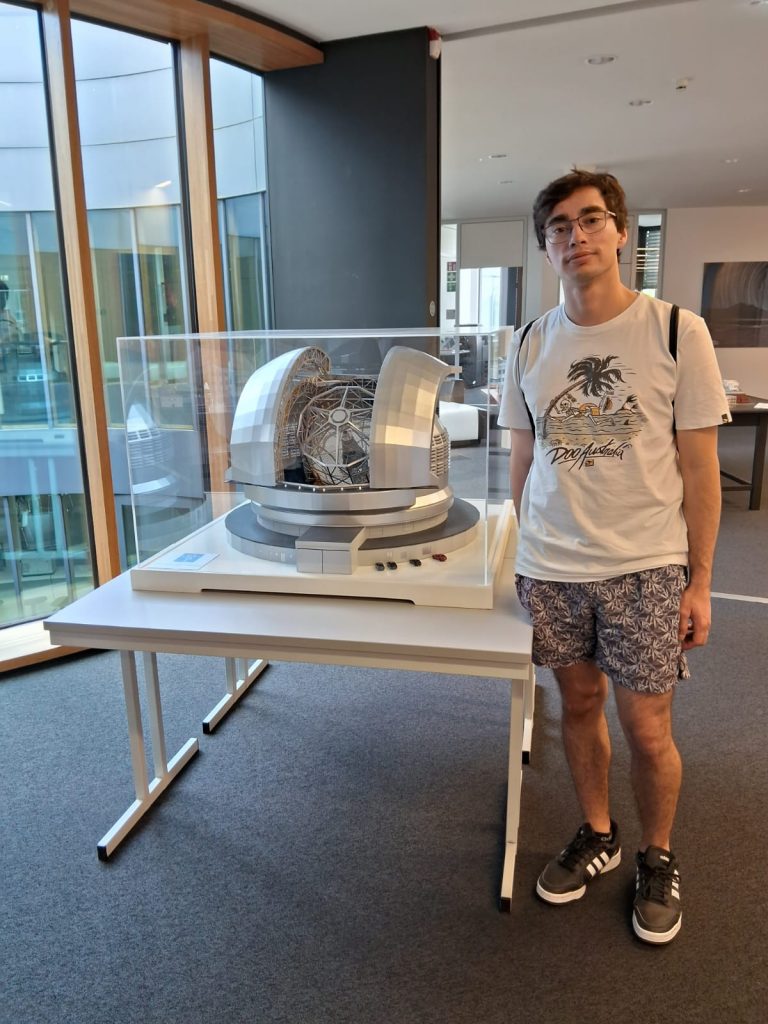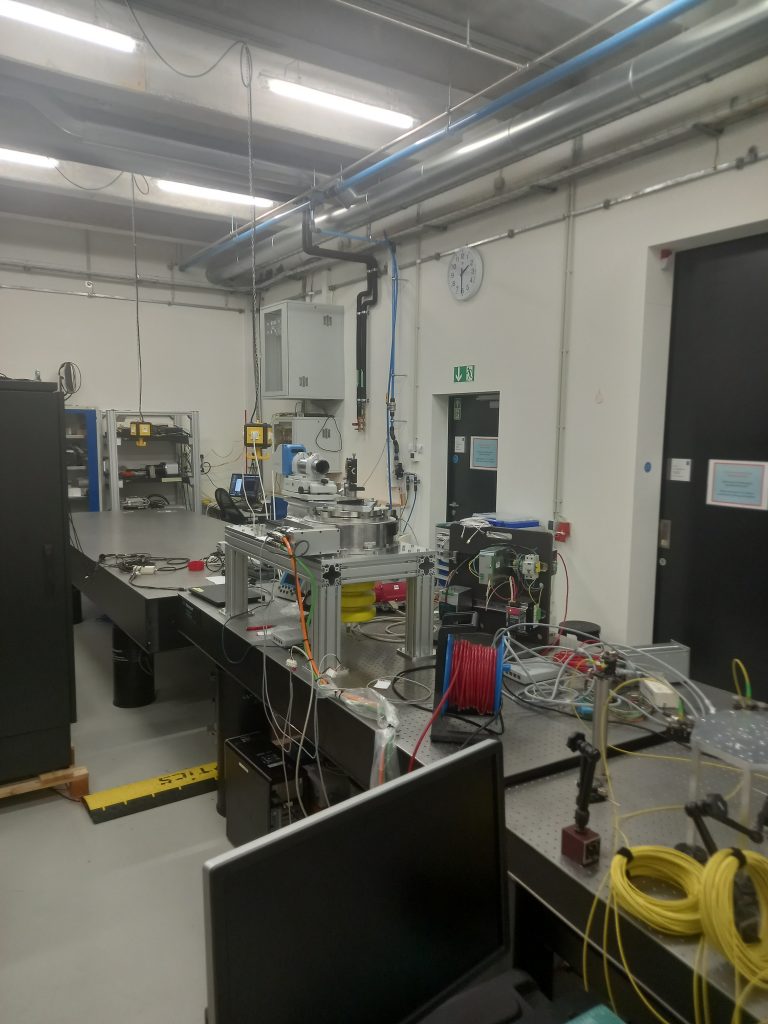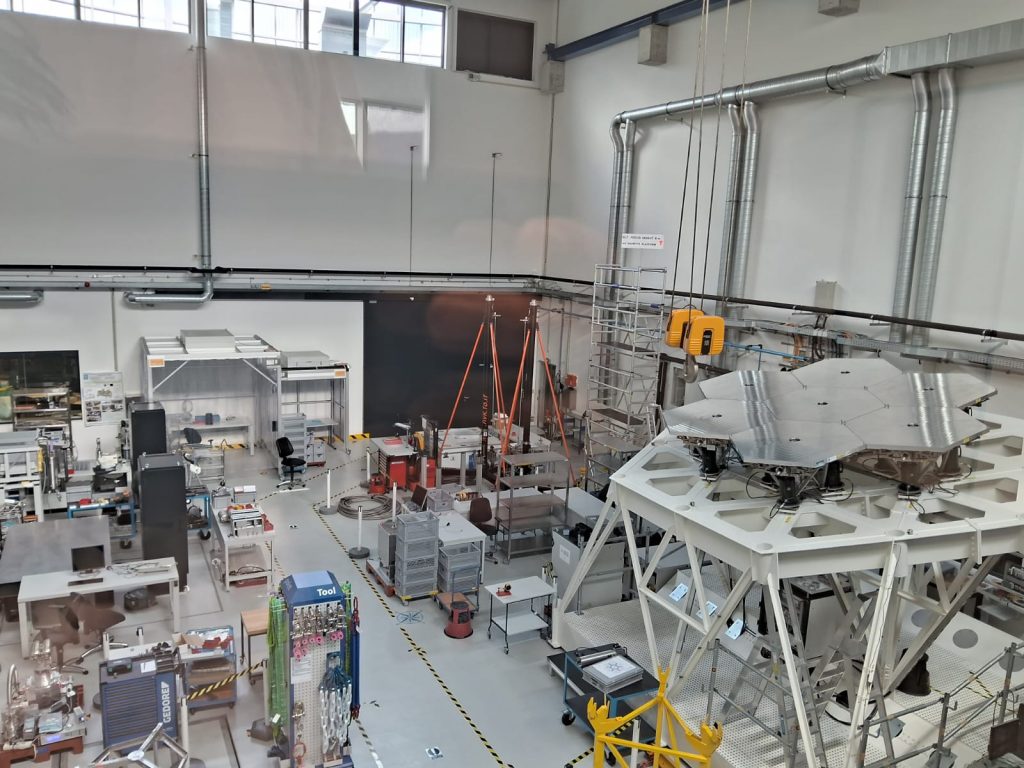Two members of Optolab, Jorge Tapia, a postdoctoral researcher, and Nicolás Hernández, a master’s student, had the opportunity to visit the offices and laboratories of the ESO this year.
The European Southern Observatory (ESO) is an intergovernmental astronomical organization that operates telescopes located in northern Chile, with its offices in Garching, a city near Munich, Germany.
The Optolab members were guided through the visit by Dr. Felipe Pedreros, responsible, among other things, for the laser instrumentation that will enable the operation of the laser guide star system of the Extremely Large Telescope (ELT), currently under construction on Cerro Armazones, Region of Antofagasta. He welcomed the Optolab researchers, showcasing the latest technology in adaptive optics.
“Entering the laboratory where Felipe works on operating, cooling, and fixing lasers, among other things, was unique because it’s something that hasn’t been seen before”, Jorge comments.
They also had the opportunity to learn about the working dynamics of the laboratories and understand how it is to collaborate with companies from different parts of the world for a common goal, the assembly of the ELT.



“It was great to see where all the tests, assemblies, and studies of the lasers that will be installed are being carried out. The instruments of the ELT are gigantic; they don’t fit in a single laboratory. That’s why there are modules dedicated to lasers, mirrors, etc. Once all these elements are ready, they are assembled for final operation in the telescope,” Nicolás explains.
Dr. Tapia emphasizes the importance of having opportunities like this, stating, “Part of the challenge at Optolab is to generate knowledge and train people who can eventually work in a place like the ESO, but also to develop instrumentation here that can be tested someday on state-of-the-art telescopes like the ELT.”
Witnessing the latest technology is a great motivation to continue working and improving what has already been achieved, with the ongoing research and future projects that will come along with new members joining the laboratory in the upcoming years.
Thank you, Jorge and Nicolás, for sharing the records of this interesting visit!

